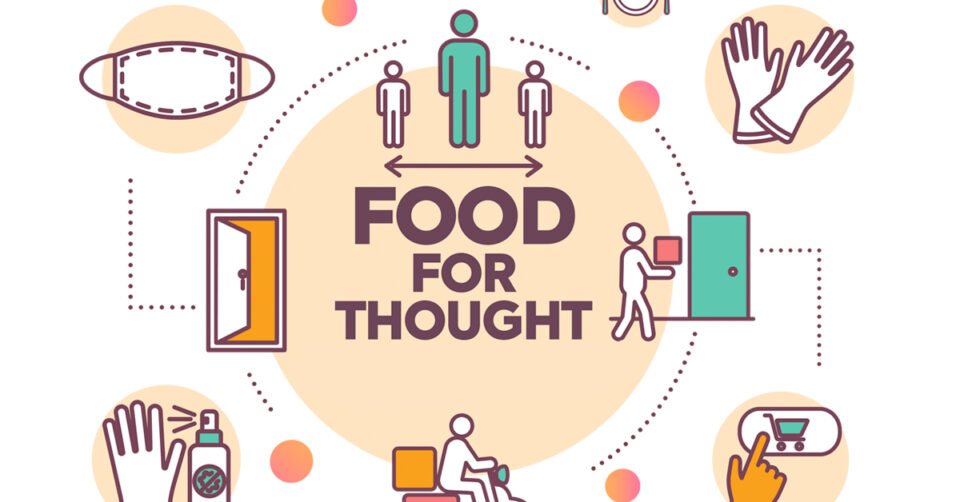Exploring the future of food franchising in Canada amid the COVID-19 pandemic
By Jordan Whitehouse
When the first wave of the pandemic hit last March, the impact on the food service industry was almost immediate. Sales were lower in April than they had been for over two decades in this country. More than 800,000 people — or about 68 per cent of the industry’s workforce — were laid off or not working within a week. Everyone was left wondering: what’s next?
We’re still asking that same question, but as the executives at three food franchises told us, the key to survival for franchisees isn’t just about adopting technological solutions or adapting quickly to what does come next. It’s also about keeping your people front and centre. As Boston Pizza’s Marian Raty, put it: “This is a people-centric industry, so focus on the people — your team, your guests, your relationships with your community, and suppliers.”
Boston Pizza
Given Boston Pizza director of communications Marian Raty’s people-centric advice, it’s not surprising to hear that one of the biggest takeaways from the pandemic for Boston Pizza has been the strength of its people. “We saw our communities coming together to find solutions; the Boston Pizza community, our supplier partners, and the greater restaurant community,” says Raty. “We’ve all worked together to support each other, stay safe, and move forward in an ever-changing landscape.”
Boston Pizza currently has more than 380 locations in Canada, and has had a strong takeout and delivery business model for years, so the brand was in a fortunate position compared to others who had to figure this out for the first time when restaurants were forced to close their doors to in-person dining. But, of course, Raty says COVID-19 still had a significant impact on all Boston Pizza locations, from implementing new safety processes, to operating in a takeout only environment, to adapting to changing mandates from public health and governments.
Boston Pizza has been taking those public health orders very seriously, adds Raty. In fact, the company chose to proactively close dining rooms and bars before the government mandated it in many regions. “As Canada’s largest casual dining restaurant chain, we knew we had a part to play in helping get through this global health crisis,” says Raty.
Moving forward, Raty says that as the company maintains its focus on safety, they continue to explore new technologies for touchless dining and takeout. And with the expanding emphasis on takeout and delivery, they’re also considering options to make the at-home experience as similar to the dine-in feeling as possible.
As for the industry as a whole, Raty remains hopeful. “The food franchise industry has always adapted to consumer desires and needs and will continue to do so. As we hopefully move beyond the pandemic, the industry will likely continue to place an emphasis on touch-free or low-touch experiences, increased takeout and delivery, and, of course, finding new ways to serve our guests the way they want to be served.”
Dairy Queen Canada
Most large food franchises have crisis management playbooks to help them deal with unexpected events like natural disasters or technological crises. But few of those playbooks include tools for handling a pandemic (at least until recently). Such was the case for Dairy Queen Canada, and although the pandemic was a shock to the brand and forced some locations to close, executive vice president Peter White says he’s proud of how the company quickly came together to face this unprecedented challenge.
“The key was daily communication, listening to our franchisees,” he says. “Relationships are so important in normal business, but it was so key for us to work together collectively and be on the same page. And not only on our operational initiatives, but our marketing strategies were adjusted where appropriate, too.”
One of the biggest takeaways from this entire experience has been the importance of drive-thru for the company, says White. Not that they didn’t know how crucial drive-thru is, but when drive-thru volume increased from 55 per cent of the business pre-pandemic to 80 per cent during the pandemic, that obviously takes on a whole new focus. “It required some retooling,” says White. “But we’re extremely proud of our franchisees and how they made changes on the fly to be ready for the volume, to make sure our fans were served safely, and that speed of service was a true focus.”
Another big takeaway has been the importance of adopting delivery, which more Dairy Queen franchisees have done since the beginning of the pandemic, says White. Doing so has benefitted their businesses, he adds, which is why he advises not just Dairy Queen franchisees to embrace delivery technologies, but most food franchisees, too. “It’s not going anywhere, and it’s going to continue to be important. People have accepted mobile apps and delivery and curbside pickup, and that’s a good thing, so you have to adapt quickly and embrace technology to be competitive.”
White expects more Dairy Queen franchisees to adopt those technologies as the pandemic continues, as well as to remain steadfastly focused on health and safety. “That focus on safety has always been there in the restaurant business, but now it’s truly elevated. You must have the tools in place for the crew and management, but it has to be visible. You need to show that you care, and I don’t think that will change.”
Chuck’s Roadhouse Bar & Grill
When restaurants and bars reopened in Ontario after the first wave of the pandemic, some customers were understandably itching to indulge. Especially when patios were allowed to expand. For Chuck’s Roadhouse Bar & Grill, which now has over 60 locations in the province, that pent-up demand, coupled with a beautiful summer across Ontario, turned out to be good for business.
“Our sales and revenues rebounded very nicely. We were actually pleasantly surprised,” says Chris Sideris, vice president of Obsidian Group, the management company that oversees Chuck’s Roadhouse, as well as Crabby Joes, Coffee Culture, and Union Burger.
It also helped that Chuck’s took the lockdown as a chance to prepare for when things could re-open. For one, they wrote a Resuming Operations Manual that touched on the health and safety measures staff would need to know, and then trained all of the stores via Zoom. The company was also one of the first food franchises in Ontario to place QR code stickers on tables so that customers could use their phones to browse menus. Although Chuck’s was not too focused on takeout before the pandemic, they knew that would change, so they created an online ordering program and partnered with Uber Eats and Skip the Dishes during lockdown.
When the lockdown lifted, Sideris says that not only were revenues strong, but so was the demand for Chuck’s franchises. Between July and November, the company opened and franchised 12 new locations in Ontario. Sideris believes the Chuck’s concept and brand will continue to grow at a steady pace as we enter into 2021.
“It would be unrealistic for us and anybody to say that sales and revenues are going to be the same in 2020 and 2021 as they were in past years,” says Sideris. “But overall, we’ve all got to go back down to the basics and work hard to offer our guests the best quality with the best possible value.”



